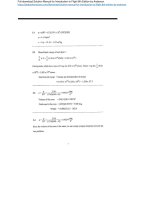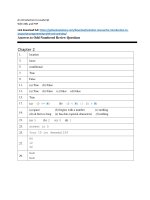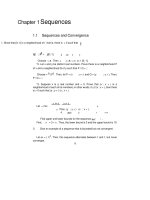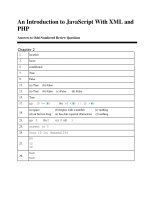Solution manual for introduction to spectroscopy 5th by papvia
Bạn đang xem bản rút gọn của tài liệu. Xem và tải ngay bản đầy đủ của tài liệu tại đây (450.13 KB, 1 trang )
Solution Manual for Introduction to Spectroscopy 5th by Papvia
DO NOT COPY
Full file at />
Answers to Problems
Introduction to Spectroscopy, 5th edition
Pavia, Lampman, Kriz, Vyvyan
Corrections to Problems are in dark blue
CHAPTER 1
________________________________________________________________________
1.
(a)
2.
32.0% carbon; 5.4% hydrogen; 62.8% chlorine; C3H6Cl2
3.
C2H5NO2
4.
180.2 = molecular mass. Molecular formula is C9H8O4.
5.
Equivalent weight = 52.3
6.
(a)
7.
The index of hydrogen deficiency = 1. There cannot be a triple bond, since the
presence of a triple bond would require an index of hydrogen deficiency of at
least 2.
8.
(a)
(c)
9.
(a) C8H8O2
10.
Molecular formula = C8H10N4O2; index of hydrogen deficiency = 6
11.
Molecular formula = C21H30O2; index of hydrogen deficiency = 7
12.
For the hydrolysis product: molecular formula = C6H12O6; index of hydrogen
deficiency = 1
90.50% carbon; 9.50% hydrogen
6
(b)
1
(c)
3
(b)
(d)
C4H5
6
(e)
12
59.96% carbon; 5.75% hydrogen; 34.29% oxygen (b)
C7H8O3
C21H24O9
(d)
A maximum of two aromatic (benzenoid) rings
(b) C8H12N2
(c) C7H8N2O
(d) C5H12O4
For the original carbohydrate: molecular formula = C12H22O11; index of hydrogen
deficiency = 2
Full file at />









